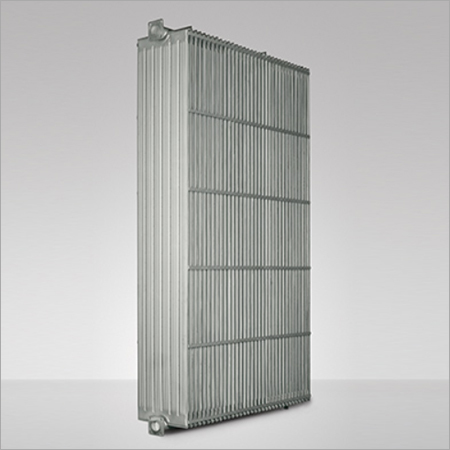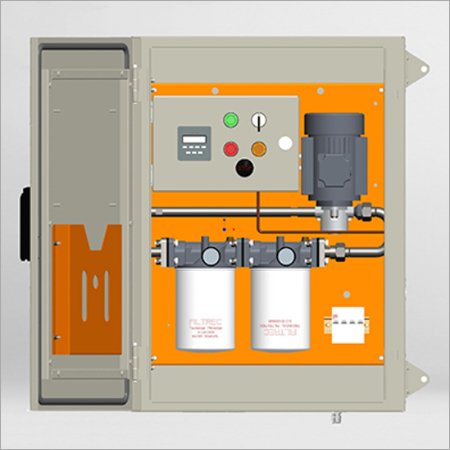

Transformer Conservator Isolation Valve (Tciv)
Transformer Conservator Isolation Valve (Tciv) Specification
- Operating Temperature
- -25C to +100C
- Standard
- IS 3639 or as per utility specification
- Dimension (L*W*H)
- Approx. 200 mm x 150 mm x 150 mm
- Product Type
- Transformer Conservator Isolation Valve (TCIV)
- Material
- Metal
- Usage
- Used in transformer conservator system to isolate conservator tank from external environment.
- Weight
- Approx. 3-5 kg
About Transformer Conservator Isolation Valve (Tciv)
Efficient Isolation and Leakage Prevention
The TCIV is engineered to deliver absolute isolation between the conservator tank and the main transformer tank, preventing external contamination and internal oil leakage. With zero-leakage design under specified operating conditions, it safeguards transformer integrity during maintenance and operation, reducing downtime and enhancing system reliability.
Versatile Application and Customizable Options
Designed for use in oil-filled power and distribution transformers, the TCIV accommodates a variety of transformer configurations. Its flanged ends and bolted connections ensure compatibility with existing systems, while customizable color and port sizing allow adaptation to specific installation environments and aesthetic requirements.
Durable Construction and Low Maintenance
Featuring a metal body coated with corrosion-resistant paint, the TCIV is built to withstand harsh operating conditions, including temperatures from -25C to +100C. The valves robust build, compact dimensions, and handwheel operation minimize maintenance needs, ensuring seamless performance over extended service life.
FAQs of Transformer Conservator Isolation Valve (Tciv):
Q: How is the Transformer Conservator Isolation Valve (TCIV) installed in a transformer system?
A: The TCIV is horizontally mounted between the conservator tank and the main transformer tank using its flanged ends and bolted connections. This installation ensures firm attachment and effective isolation of the conservator tank from the external environment.Q: What are the main benefits of using a TCIV in transformer applications?
A: The TCIVs zero-leakage design protects transformer oil from contamination and prevents unintended oil loss, enhancing transformer reliability and reducing maintenance requirements. Its robust construction and corrosion-resistant coating also ensure long-term durability.Q: When should the TCIV be operated or isolated in a transformer system?
A: The TCIV is typically operated manually via a handwheel during maintenance, oil sampling, or emergency situations when isolation between the conservator and transformer tank is required to secure the oil system and prevent contamination.Q: Where can TCIVs be applied, and are there customization options available?
A: TCIVs are suitable for oil-filled power and distribution transformers. The valve can be customized to suit specific port diameters, colors, and other requirements as per transformer design or installation preferences.Q: What is the expected maintenance process for a TCIV?
A: The TCIV is designed for low maintenance owing to its durable metal construction and corrosion-resistant paint finish. Periodic inspections for operational integrity and visual assessment of the coating are generally sufficient to maintain optimal performance.Q: Which operation method does the TCIV utilize, and what pressure is it rated for?
A: The TCIV is operated manually using a handwheel, offering precise control during isolation or connection. It is rated for a maximum operating pressure of up to 2 bar, suitable for transformer oil systems.Q: What standards does the TCIV comply with, and who are its typical suppliers in India?
A: The TCIV is manufactured to meet IS 3639 standards or specific utility specifications. It is provided by manufacturers, suppliers, and service providers specializing in power transformer equipment in India.

Price:
- 50
- 100
- 200
- 250
- 500
- 1000+
More Products in Transformer Accessories Category
Assembled Bushings
Minimum Order Quantity : 1 Piece
Material : Epoxy Resin Impregnated Paper, Porcelain
Product Type : Other, Assembled Bushing
Usage : Electrical Insulation and Mechanical Support in Transformers
Cooling Type : Selfcooled / Oilimmersed
Operating Temperature : 25C to +105C
Epoxy Molded Parts
Minimum Order Quantity : 1 Piece
Material : Plastic
Product Type : Other, Epoxy Molded Parts
Usage : Industrial
Pressed Steel Radiators (PSR)
Material : Pressed Steel
Product Type : Other, Pressed Steel Radiator (PSR)
Usage : Industrial Heating and Cooling Applications
Cooling Type : Oilcooled/Watercooled
Operating Temperature : Up to 120C
Tapchanger Filter
Material : Metal and Plastic
Product Type : Other, Tapchanger Filter
Usage : Used to filter impurities in tapchanger systems
Cooling Type : AirCooled

 Send Inquiry
Send Inquiry





